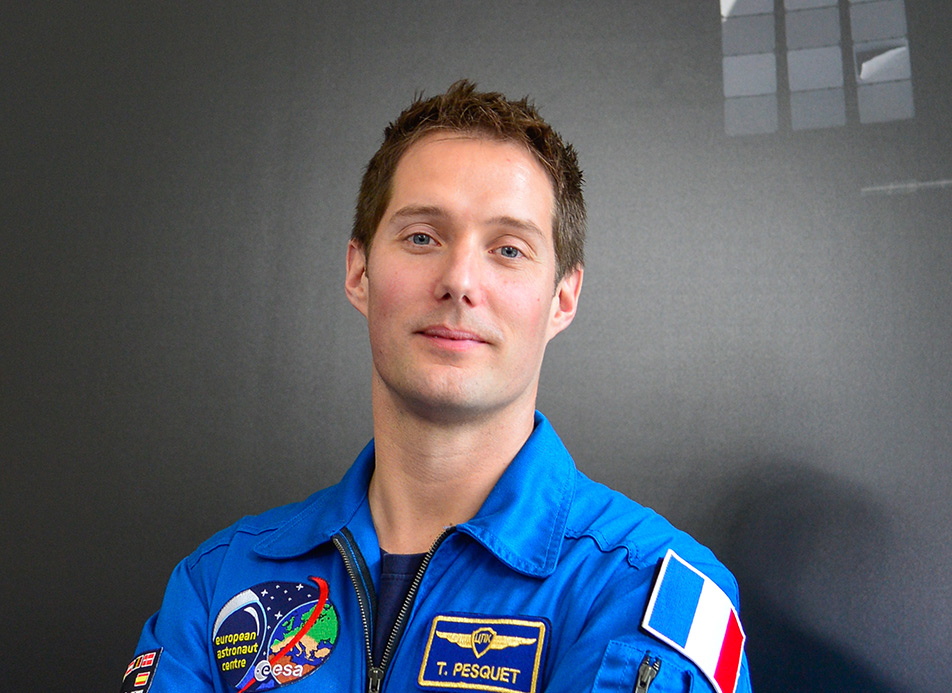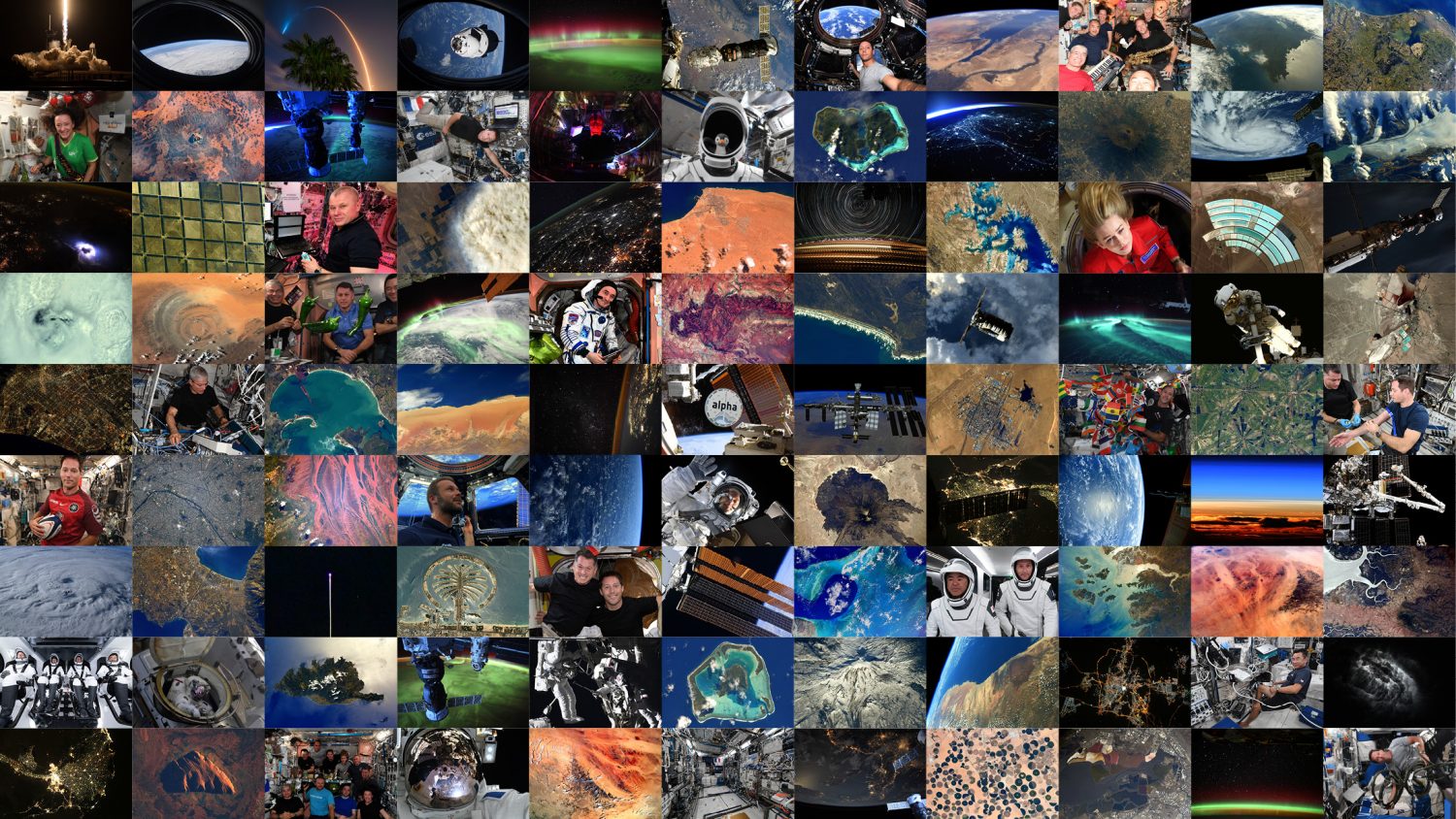
Thomas Pesquet
(English) 100 more days of science and operations in space for Thomas
Posted on mardi 9 novembre 2021 by julien
Désolé, cet article est seulement disponible en English.
Read the article

Thomas Pesquet was born in Rouen, France, on 27 February 1978. He was launched to the International Space Station for his first six-month mission, Proxima, in November 2016. Thomas's second mission to the Space Station, known as Alpha, was from April to November 2021.
From April to September 2001, Thomas was a trainee engineer with Thales Alenia Space in Cannes, France, where he developed a satellite system design tool using concurrent engineering techniques.
From October 2001, he worked as a spacecraft dynamics engineer on remote sensing missions for GMV S.A. in Madrid, Spain.
Between 2002 and 2004, Thomas worked at the French space agency, CNES, as a research engineer on space mission autonomy. He also carried out studies on future European ground segment design and European space technology harmonisation. From late 2002, he was a CNES representative at the Consultative Committee for Space Data Systems, working on cross-support between international space agencies.
An avid private pilot in his spare time, Thomas was selected in 2004 for Air France’s flight training programme. He went on to become a commercial pilot for the airline, where he started flying the Airbus A320 in 2006. Having logged more than 2300 flight hours on commercial airliners, he became a type rating instructor on the A320 and a Crew Resource Management instructor.
Thomas was selected as an ESA astronaut in May 2009. He joined ESA in September 2009 and completed basic training in November 2010. After graduation, he worked as a Eurocom, communicating with astronauts during spaceflights from the mission control centre. He was also in charge of future projects at the European Astronaut Centre, including initiating cooperation with new partners such as China.
To be ready for a space mission, he received further technical and operational training in Europe, Russia and the USA: on the Russian Soyuz spacecraft, on the US and Russian spacesuits, and on Space Station systems. He took part in exploration training courses: living and working underground on ESA’s CAVES training course in 2011, and underwater on NASA’s Seatest-2 mission.
On 17 March 2014, Thomas was assigned to his first long-duration mission on the International Space Station. He was launched to the International Space Station for this six-month Proxima mission, as a flight engineer for Expeditions 50 and 51, on 17 November 2016.
Thomas' second spaceflight was announced on 28 July 2020. He traveled to the International Space Station on the second SpaceX Crew Dragon mission together with JAXA astronaut Akihiko Hoshide and NASA astronauts Shane Kimbrough and pilot Megan McArthur. The mission is called Alpha, after Alpha Centauri, the closest stellar system to Earth, following the French tradition to name space missions after stars or constellations. The mission assignment was the first time a European flew to the Space Station in the Crew Dragon, and the first time from USA in over a decade.
When Thomas is not in space or training for his next mission, he enjoys basketball, jogging, swimming, squash and outdoor sports such as mountain biking, kite surfing, sailing, skiing and mountaineering. He also has extensive experience in scuba diving and skydiving and is a black belt in judo. Thomas' other interests include travelling, playing the saxophone and reading.
Thomas Pesquet is a European Space Agency astronaut of French nationality. He spent six-months on the International Space Station between November 2016 and June 2017 and again between April and November 2021. Thomas served as a flight engineer for Expeditions 50 and 51. He previously worked as an aerospace engineer, and is also an airline pilot for Air France.


Posted on mardi 9 novembre 2021 by julien
Désolé, cet article est seulement disponible en English.
Read the article

Posted on lundi 8 novembre 2021 by julien
Désolé, cet article est seulement disponible en English.
Read the article

Posted on samedi 11 septembre 2021 by julien
Les astronautes Thomas Pesquet (ESA) et Aki Hoshide (JAXA) effectueront une nouvelle sortie dans l’espace ce dimanche 12 septembre, d’une durée d’environ 6 heures et 30 minutes.
Read the article

Posted on vendredi 10 septembre 2021 by julien
(English) ESA astronaut Thomas Pesquet and Japanese astronaut Akihiko Hoshide are set to leave the International Space Station on a spacewalk on Sunday 12 September.
Read the article

Posted on dimanche 1 août 2021 by Nadjejda
L’astronaute de l’ESA Thomas Pesquet a passé dimanche 1er août le cap des 100 jours à bord de la Station spatiale internationale depuis le début de sa mission Alpha. En ajoutant le temps passé lors de Proxima, il cumule en tout 296 jours en orbite ! Cet article détaille la plupart des activités effectuées par Thomas depuis le décollage du 23 avril dernier.
Read the article

Posted on mercredi 23 juin 2021 by julien
(English) Two spacewalks into the Alpha mission and a lot has happened for our spacewalking duo ESA astronaut Thomas Pesquet and NASA astronaut Shane Kimbrough.
Read the article

Posted on mardi 15 juin 2021 by julien
(English) On Wednesday 16 June and Sunday 20 June ESA astronaut Thomas Pesquet and NASA astronaut Shane Kimbrough are going to get into their Extravehicular Mobility Units – or spacesuits – and return outside the International Space Station for the third time together. Their mission on both spacewalks: to install new solar arrays that will increase power to the outpost.
Read the article

Posted on mardi 15 juin 2021 by julien
(English) Two spacewalks are fast approaching for ESA astronaut Thomas Pesquet, and NASA astronaut Shane Kimbrough who are preparing to exit the International Space Station and upgrade the Station’s power supply.
Read the article